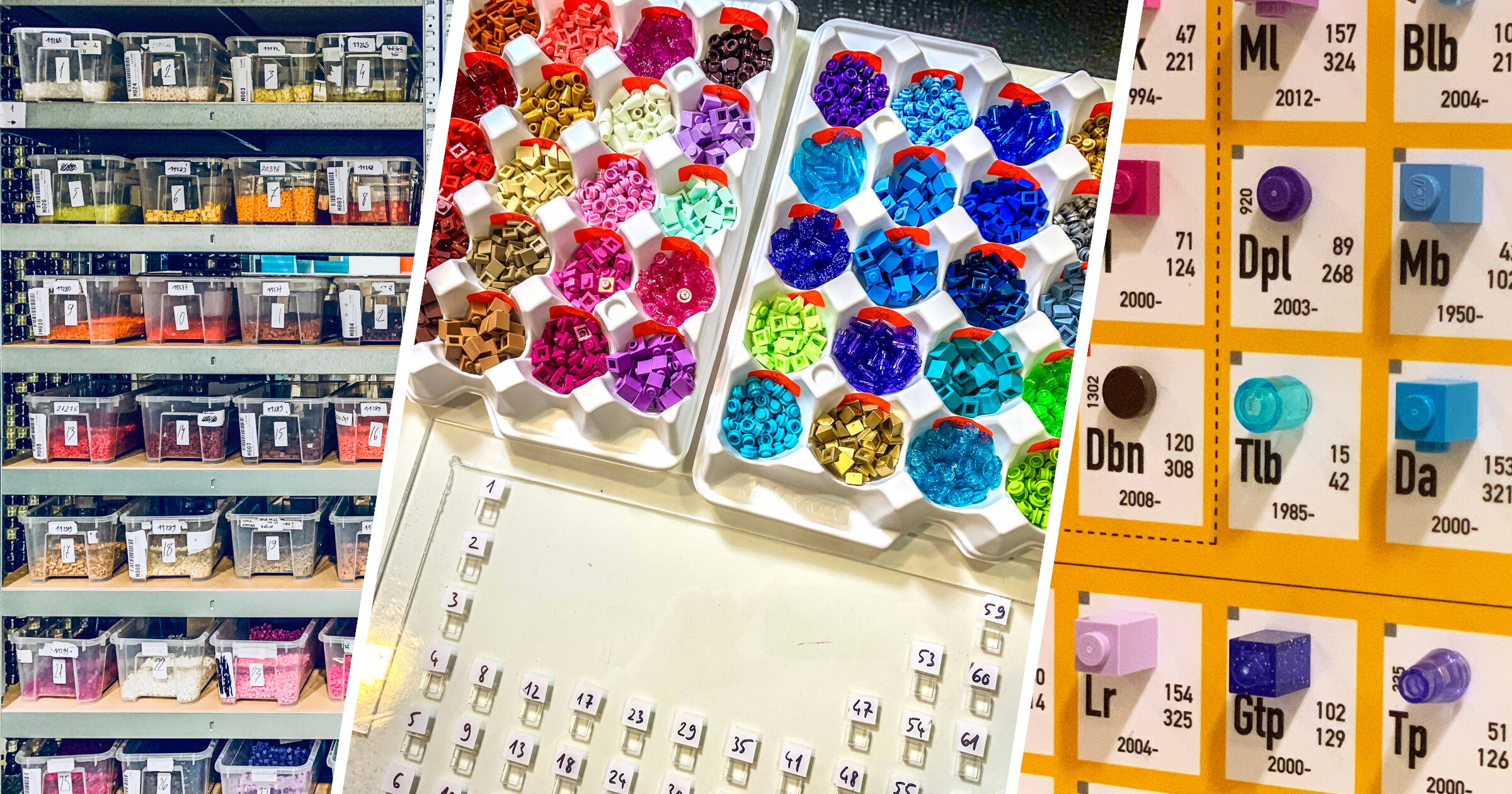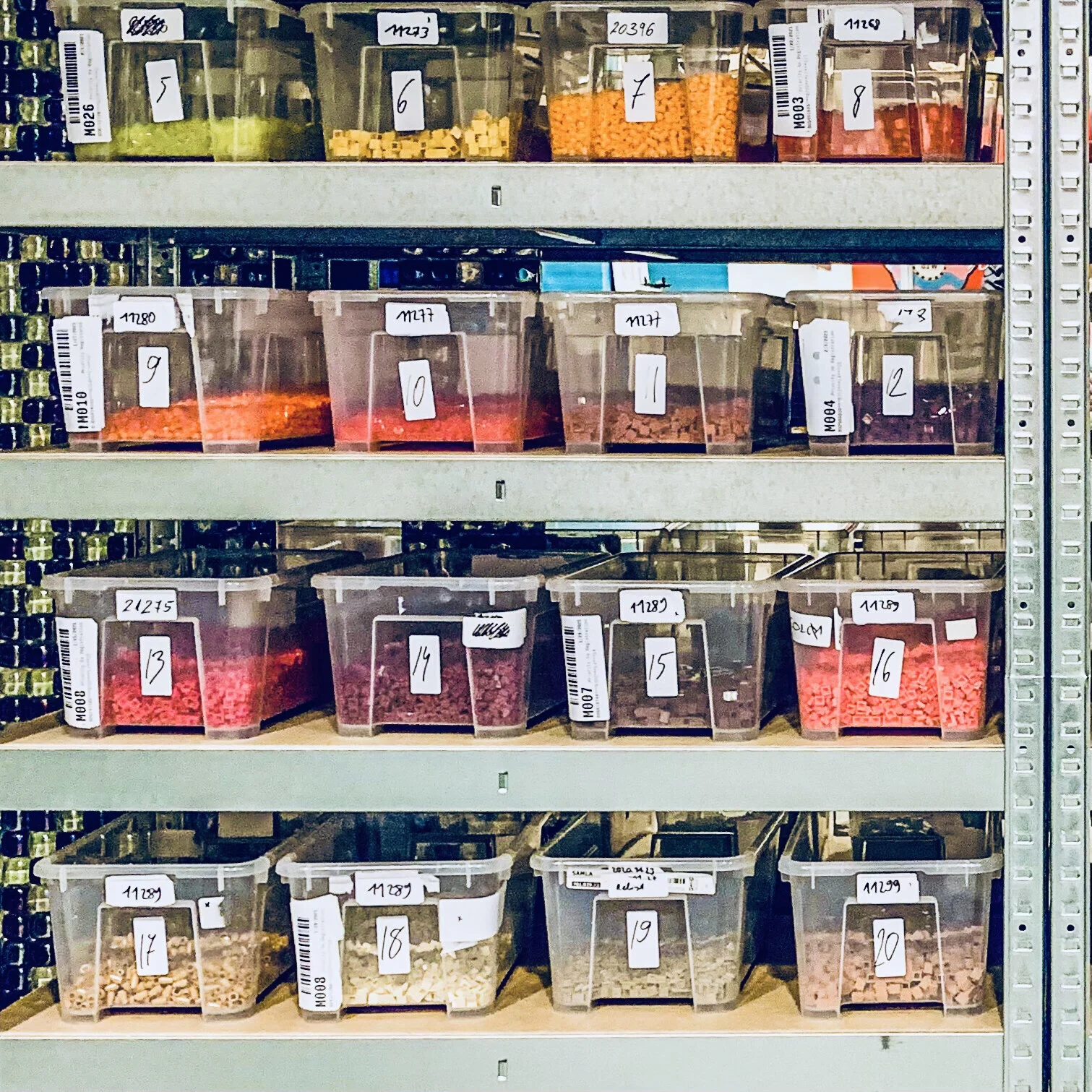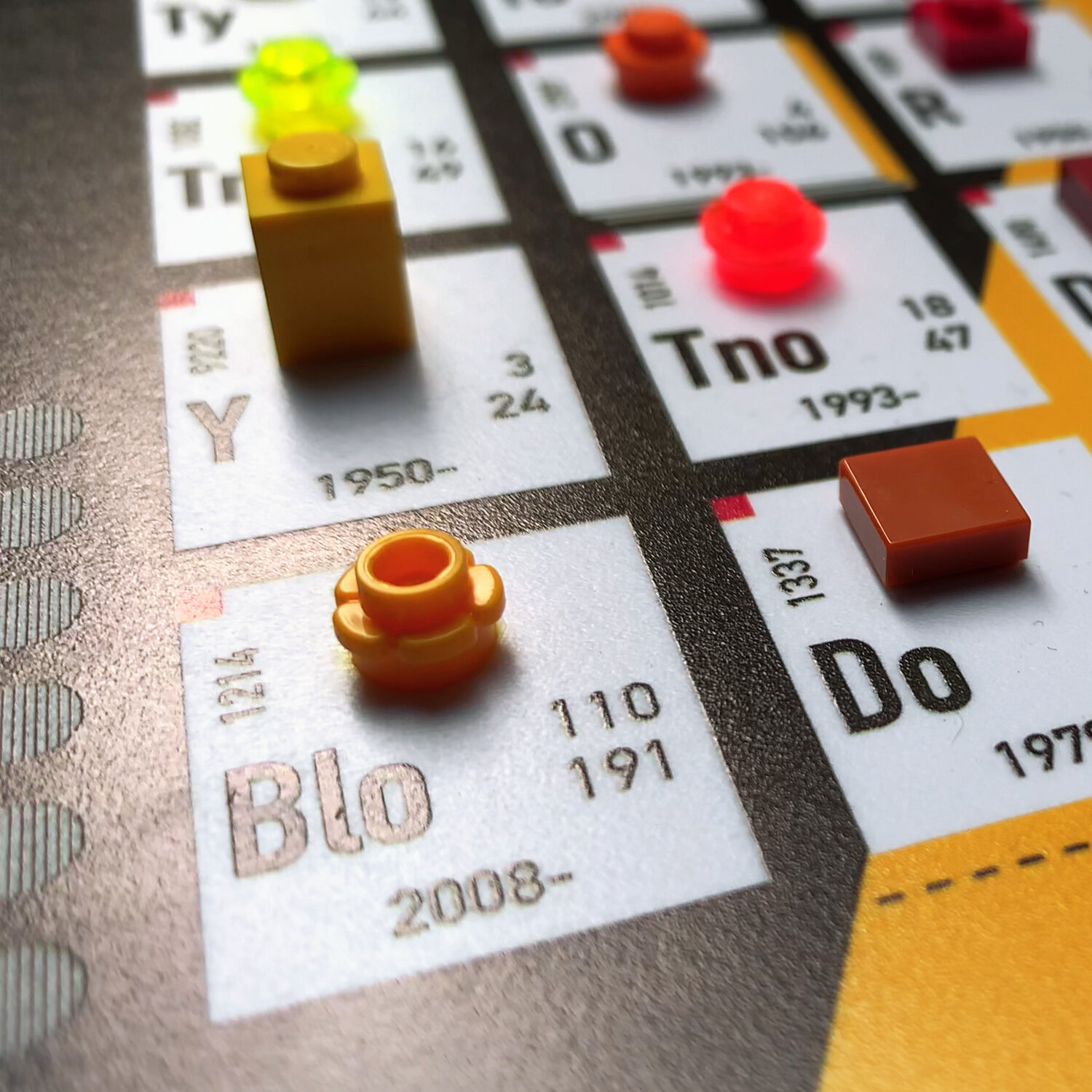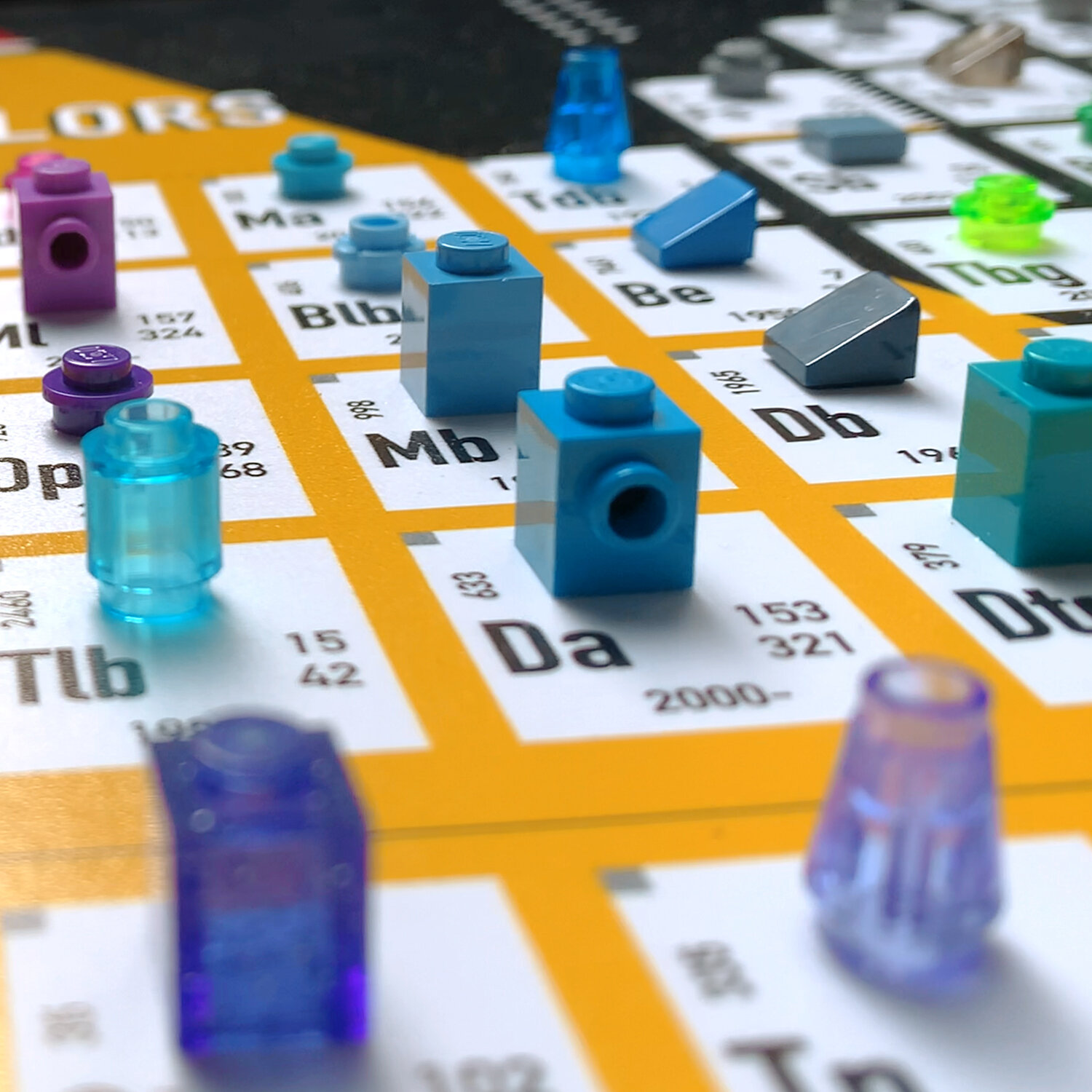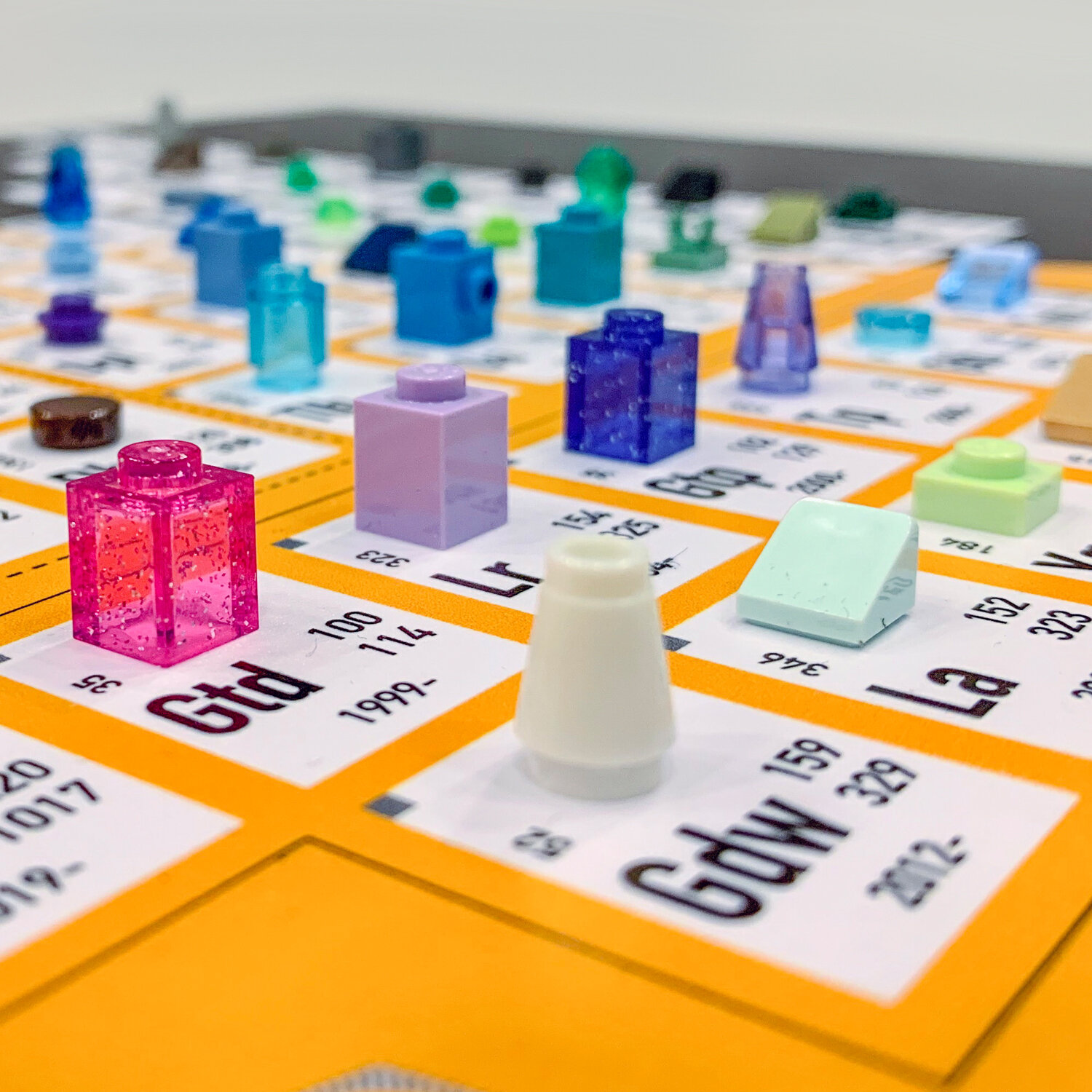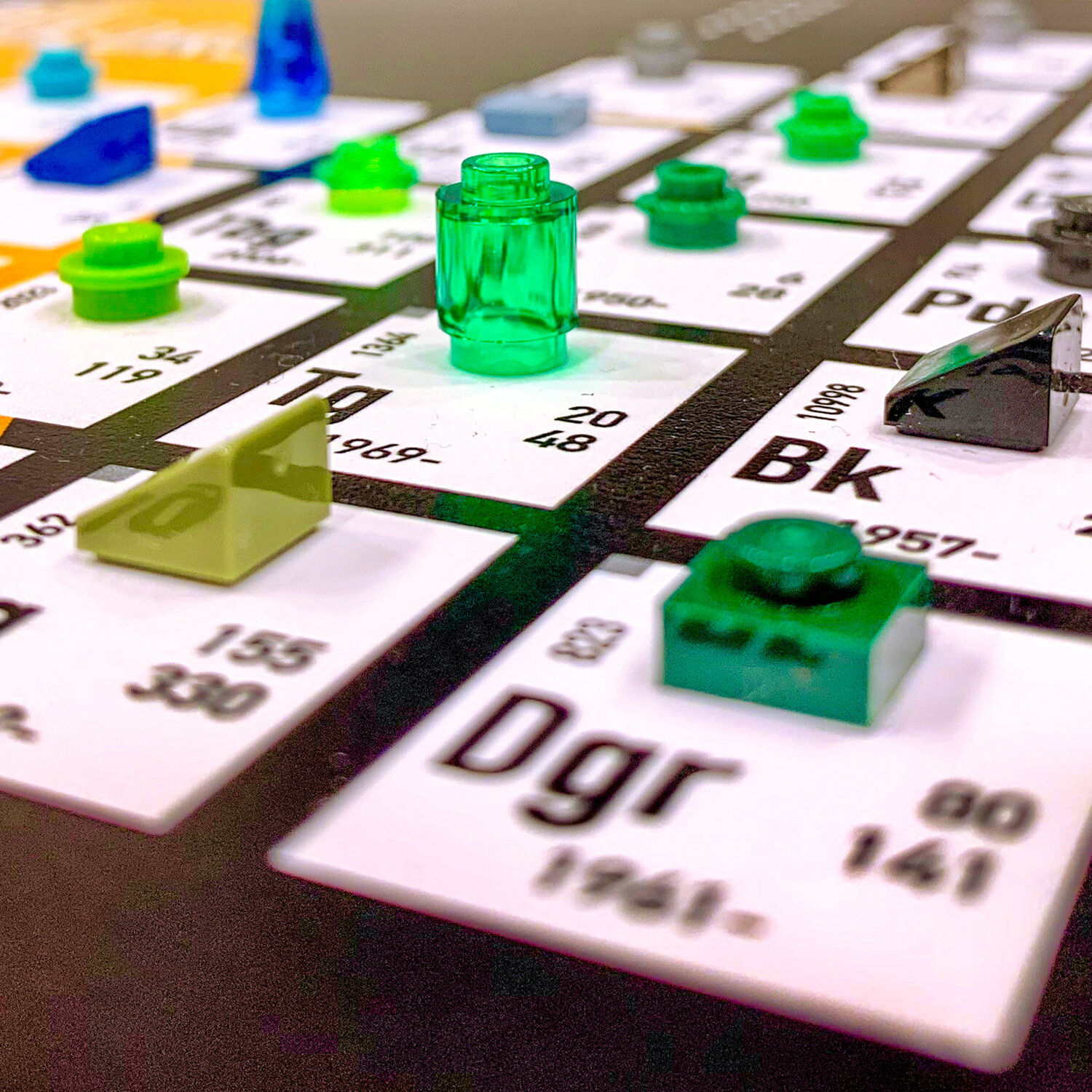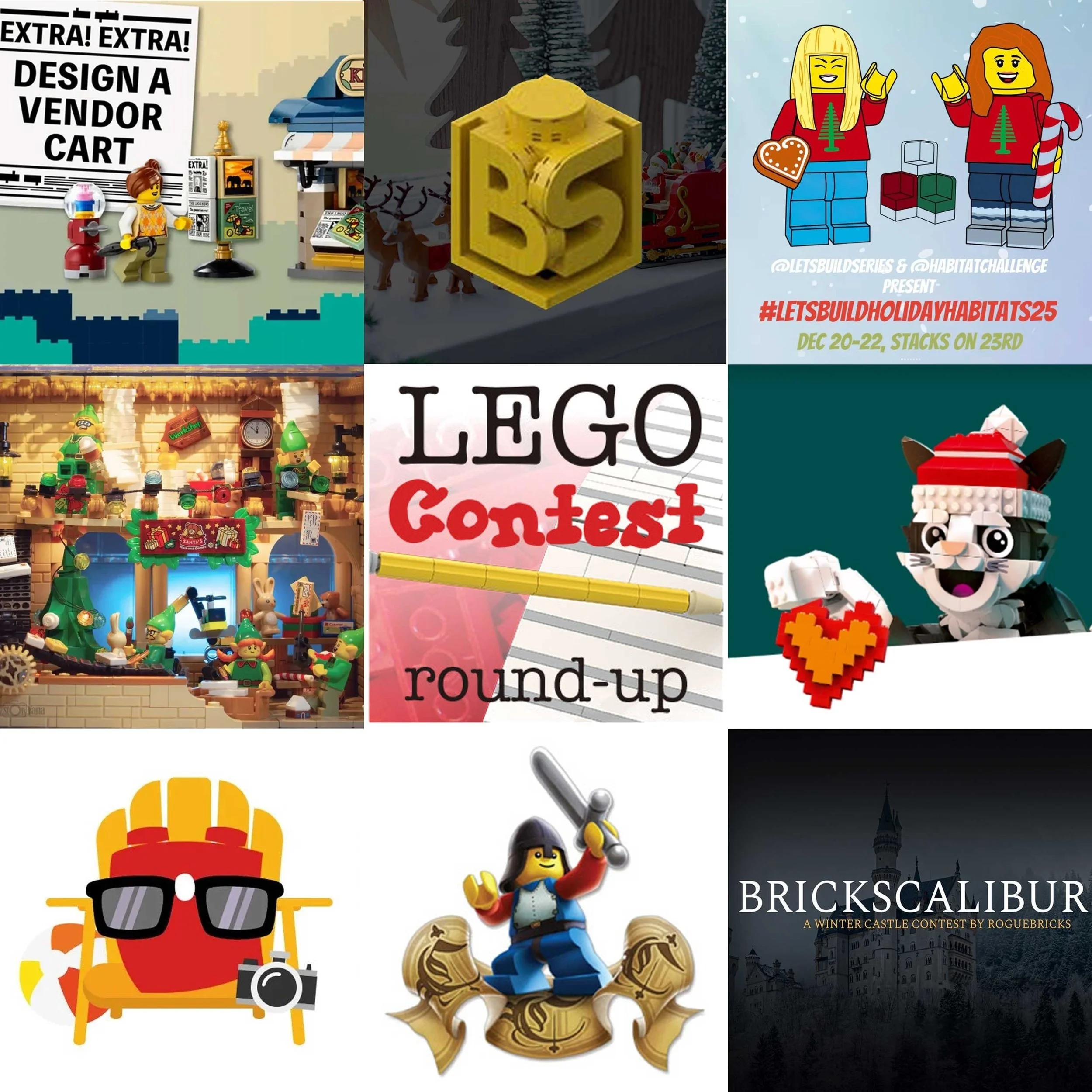Charting Colors: Behind the Scenes of the Periodic Table of LEGO Colors
/Every now and then, a LEGO-related product comes along that takes social media by storm. LEGO tape, mugs, books and even a waffle maker have all caused a stir, appearing in many a LEGO fan’s Christmas stocking or birthday party. But outside the entertainment value and novelty of these products, are any of them actually useful to a LEGO builder—let alone beautiful?
Recently, another of these products caught our eye, The Periodic Table of LEGO Colors. In typical BrickNerd fashion, we were curious about the story behind this colorful chart—that a few of our contributors had already purchased and actually used. We sat down with Dorottya Fogel from WLWYB (WE LOVE WHAT YOU BUILD) to chat about the layout, design process, and inside secrets of the table and how such a colorful reference came to be.
Dave: Thanks for chatting with BrickNerd! I’m curious, how did the idea of the LEGO Periodic Table come about? Is there a story behind it?
Dorottya: It is good to chat with you! The idea came about at a product development meeting in late summer 2020. We built a world map of Tetromino (Tetris-shaped parts made of LEGO pieces) a year before and a picture of a Periodic Table of elements popped into my mind while browsing the web. I raised the idea to David Kokai, the founder of WLWYB (WE LOVE WHAT YOU BUILD) that we should make a Periodic Table of LEGO Elements, and I got the opportunity to build up the project as a new product from scratch.
Dave: Was it a team project at WLWYB? Who is on your team, and what backgrounds do you come from?
Dorottya: We are a team of twelve now, including the management and the operations team who are fulfilling the orders day-by-day from our BrickLink store, MOCHUB, and the WLWYB Shop. We come from several fields of expertise. David, our founder, was working for more than 10 years in the IT sector before he started WLWYB about 12 years ago. I, myself, was working for more than 10 years at cable television channels like Comedy Central and RTL Group. Our Head of Creative, Neska, has more than 15 years of experience working at agencies and movie productions. Others have a sales or project management background. So we are a pretty well-versed group.
The Periodic Table of LEGO Colors is a team project, I got the opportunity to build up the project elements and then involve my colleagues in it. David figured out what colors should be on the board, Neska designed the background when the prototype was ready, the operations team made a production plan for producing large quantities perfectly, and the supply team acquired all LEGO parts in time!
Dave: How did you decide which colors appear on the table? Most are currently in production, but I see the old greys also there. Why not other retired colors?
Dorottya: Yes, most of the colors are in production now at LEGO. Our goal was to make a product that helps builders and LEGO enthusiasts get to know more colors while building. There is a statistic that a regular LEGO builder only uses the same five colors nearly all the time! It really shows the diversity of colors as a guide, or it can be a piece of art that’s “out of the box” in terms of a LEGO-related product. This product helps you to know the difference, for example, between Dark Azure and Dark Turquoise or Dark Gray and Dark Bluish Gray. We chose to include old Gray as a retired piece because that’s an iconic color. There is another retired color, Trans Medium Blue, included too. There are around 150-180 different colors that LEGO has produced until today and this only sums up third of it.
Dave: This is your second version of the table. What changed from the first version to the second? Are there any colors exclusive to the first version?
Dorottya: Glitter-Trans Light Blue was exclusive to the first version. The background for the second version is new, there are new parts, and we added new colors and adjusted others. It got a new hanger on the back which is more stable than the one on the first version. We also added information to each part including color ID and the number of sets they appear in. Most noticeably, we have re-arranged the colors into cold and warm colors and made a section on the bottom of the board with the rarest parts determined by their number of appearances in LEGO sets.
Dave: Speaking of the second version, will there also be a third?
Dorottya: We can’t say at the moment, but we are working on our upcoming products right now. So stay tuned and follow our journey to be the first to know when we come out with our next crazy idea.
Dave: Going back to the grouping on the table, the order of the parts seems to be based more on aesthetics than a scientific grouping. How did you decide on the color order of the table? What was your thinking behind the "periodic” groupings of the rows and columns?
Dorottya: We wanted to show the most diverse range of LEGO colors. It’s not just because we love colors and LEGO parts, but we are a neurodiverse workplace, and we love diversity in all parts of life. The groupings were made similar to Mendeleev’s Periodic Table, so we split up the board into cold and warm colors and we added a section to the bottom of the Periodic Table where you can find all the rare parts.
Dave: How did you determine the “element name” abbreviations and color codes for each color? And what do you think of the differences between LEGO color names and BrickLink color names?
Dorottya: We use these short forms for the colors in our everyday work, and we know many others use them too. For the names, I think most people are more familiar and use the BrickLink colors names. LEGO color names can be a little confusing or funny regarding the Glitter Trans pieces. We used the color codes from BrickLink’s color guide so we think we can trust that information.
Dave: Why did you decide on the light/pyramid motif behind the table?
Dorottya: That was Neska’s idea, our Head of Creative. It’s a lamp that illuminates the LEGO elements.
Dave: Collecting all the pieces must be a challenge. How did you source all the pieces? Were any more difficult or expensive to obtain?
Dorottya: As we have had a BrickLink and BrickOwl store for more than 12 years now with around 20,000 different products in our storage, we have lots of knowledge about LEGO parts and their prices. There is no such thing as “too difficult” for us--it’s an everyday task for the supply team.
Dave: How do you place the elements on the grid so perfectly in a grid?
Dorottya: We use a sheet of plexiglass which has the empty holes cut out for each exact piece. Our colleagues in the operation team are placing them every day and are now professionals in gluing smoothly and neatly. This is a handmade, craft product at the end of the day.
Dave: I was going to ask how the pieces are attached! May I ask what kind of glue is it?
Dorottya: One of the most difficult parts of the project was finding the right glue that attaches well to LEGO, doesn’t harm it, and attaches securely to the board. We also conducted quite a few drop tests before we found the perfect one, I can assure you. We know that gluing LEGO parts is seen as being “from the devil” but it is needed in this case. I can assure you we haven’t received any negative feedback on it at all.
Dave: Were there colors that were almost part of the table but had to be cut?
Dorottya: Yes, the remaining 100! But that is because or sourcing and they did not fit on the board. :)
Dave: Have the LEGO Art sets opened up more possibilities for the future of your color periodic tables?
Dorottya: They sure did! We are coming out with new crazy gadgets and products every quarter of the year. We have been part of the secondary market of LEGO for more than 12 years now, and we are always working on products that are connected to LEGO parts and building. We like showing a new side of LEGO that opens and connects to new groups of people who know what LEGO is but did not think there is a side other than building a fire truck or a pirate ship.
Dave: I’ve personally found it useful as a quick reference when I was making a mosaic to compare colors. Have you heard of any great stories of how builders have used this as a resource? Or do more people frame it as art?
Dorottya: We are constantly getting awesome feedbacks on our site thanks to our customers. The most heartwarming story came from one of our followers on Instagram who won it on a giveaway to give it to her husband who is colorblind. The table helps him a lot during building! Most people tell us that it is a handy tool for them while they are building—they get to know colors and parts they never knew existed. A lot of people buy it as a gift for a friend or loved one who really loves LEGO and has the coolest sets but never knew this existed. Some people frame it, others don’t because they just have it by their side in their LEGO room.
Dave: What do you think of the reactions to the table so far?
Dorottya: I think we have happy and satisfied customers right now in our very own niche. We receive product reviews on our site every week. People send us messages on our social channels and via email that they love the Periodic Table and the whole service around it, including the communication from the moment it is ordered until the courier delivers it at the front door. But this does not encourage us to sit back and relax—we are always trying to improve ourselves.
Dave: Thanks so much for your time and the behind-the-scenes look! Is there anything else about the table you would like to share?
Dorottya: Yes, first of all, thank you for the opportunity to answer your questions! We enjoy how thorough BrickNerd is. Also, thank you to all of our customers who have ordered the Periodic Table of LEGO Colors from us. If you’re a person that has not heard of it yet, this is a good chance to get it. And stay tuned, we will release our next crazy idea in the following months!
If you are interested in getting your own copy of the Periodic Table of LEGO Colors, WLWYB is offering 10 percent off to BrickNerd readers for the next two weeks through May 28th using the discount code BN10 on their website.
Also thank you to WLWYB for donating a copy to BrickNerd to use as a future contest prize.
What do you think about the Periodic Table of LEGO Colors? Leave your thoughts in the comments below.
Do you want to help BrickNerd continue publishing articles like this one? Become a patron to show your support, get early access, exclusive swag and more.

